The following day we started with the sightseeing of Troodos. This is a very beautiful mountain massif whose highest peak named Olympus (and how else would it be called?) is 1951 m above sea level, which is a serious height. Still, the main reason for driving along the curves of Troodos was our intention to visit churches that are collectively in the UNESCO’s World Heritage List on account of their beautiful frescos. There are 10 of them in total (the churches), they all come from the Byzantine times and they are quite scattered across the mountain slopes. When one sees distances on the map or on the road boards, it really isn’t a lot and the roads are very good, but considering the curves, it does take time. We needed two days to visit them all, but it is important to bear in mind that both days we started from Larnaca where we returned in the evening. It is almost certain that all ten may be visited in the same day, but it is necessary to stay closer and to start early.
On the other hand, in addition to these churches, we also wanted to see some other things, so we really needed those two days, but what glorious two days these were! The first one was bright and sunny, and to start with we headed for the winter centre Troodos which is at 1725m above sea level. Those days we saw some, in our opinion, very brave people who went into the sea for a swim. And yet, regardless of the fact that it was January, this was the Mediterranean we were talking about, so swimming somehow seemed natural. However, the situation on Troodos was quite the opposite: here there was a lot of snow and everything between trees was white. The roads were nicely cleared, so there were no problems driving on them and we took an opportunity to have a coffee break in the tourist zone of the ski-centre. When we got out of the car, we had a feeling it was not too cold, especially because the sky was blue and without a single cloud, but just as we were finishing with the coffee we both agreed it was high time to go back to our warm car and move on. Along the way we also came across a ski-lift that led from the road itself. Our conclusion was that Cyprus is in fact a very nice place to live in. It is hot during summer, the sea is there and in January it is possible to go to nice heights, clean air, with lots of conifers and if somebody is willing they can also go skiing.
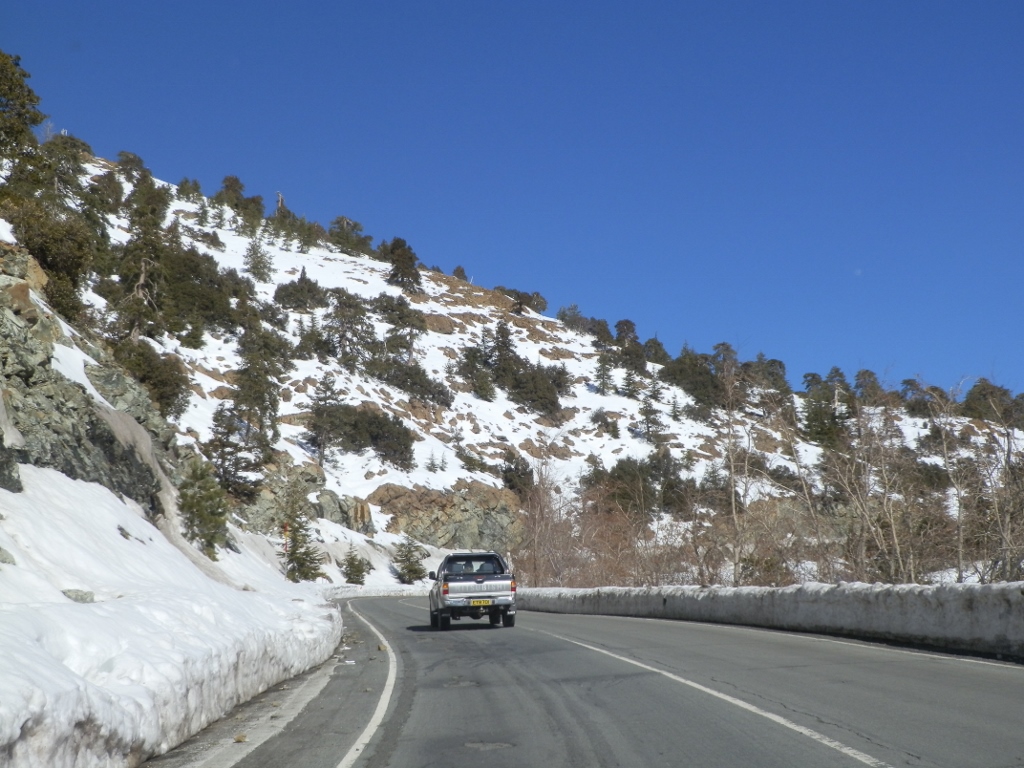 Troodos
Troodos
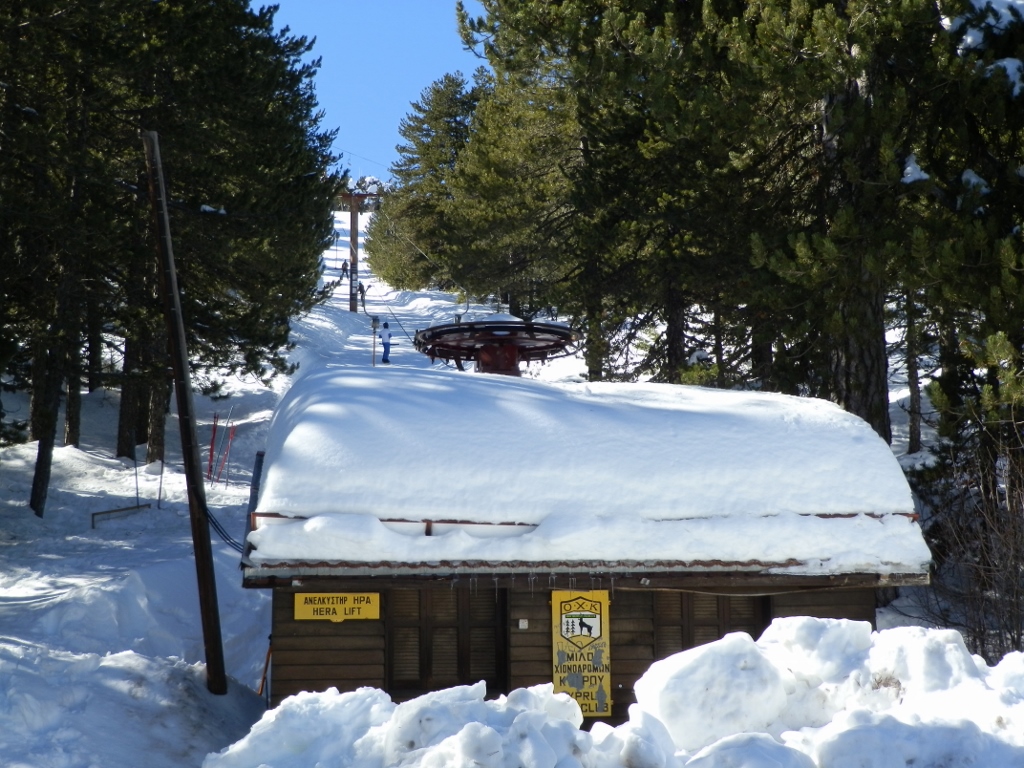 Troodos, the ski-lift
Troodos, the ski-lift
And yet, we did not go skiing, since we were on a quest for the churches with frescos.
The first on our route was the church of Archangel Michael from 1474 that is situated in Pedoulas village. First we were confused by a large, white church that was closed, but luckily we found ourselves there at the same time as a couple who, unlike us, knew exactly what they were doing and what they were looking for, so they told us it was the new church and that the one we were looking for was a little farther. Thus we went there and indeed it was exceptionally beautiful. Small, made of stone, even quite unlike typical churches from the outside, but the frescos inside of it were exceptional. I didn’t see any sign saying it was prohibited to take photos, and I NEVER use flash for such things, so I took a couple of photos without any feeling of guilt.
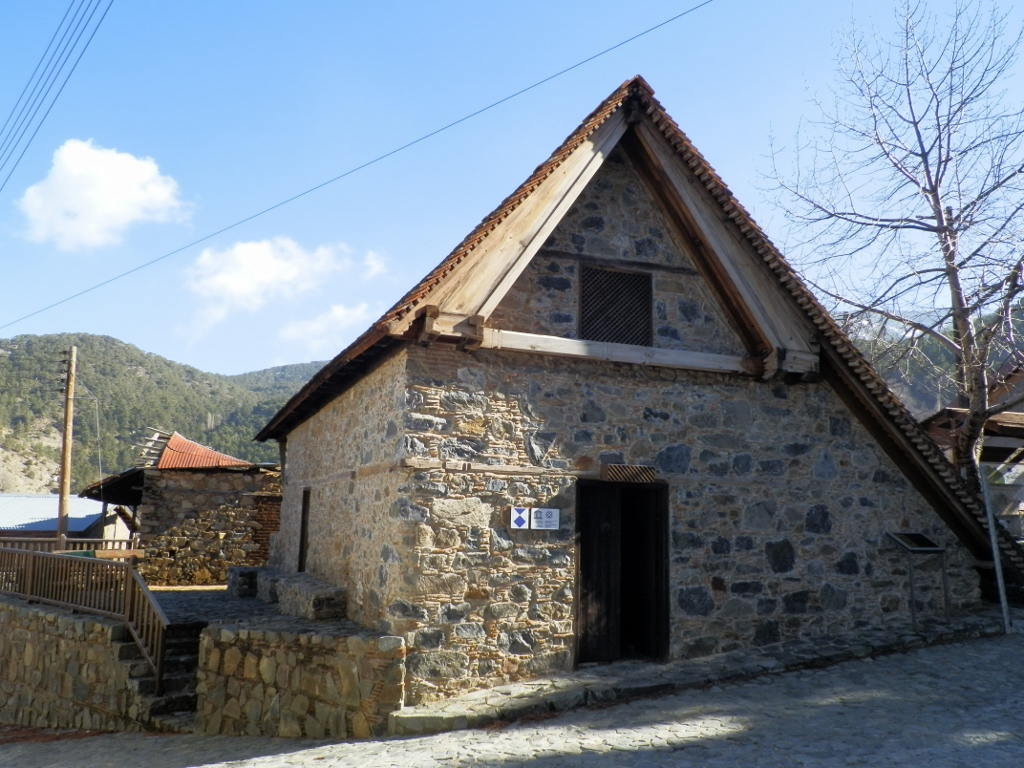 Archangelos Michael church in Pedoulas village
Archangelos Michael church in Pedoulas village
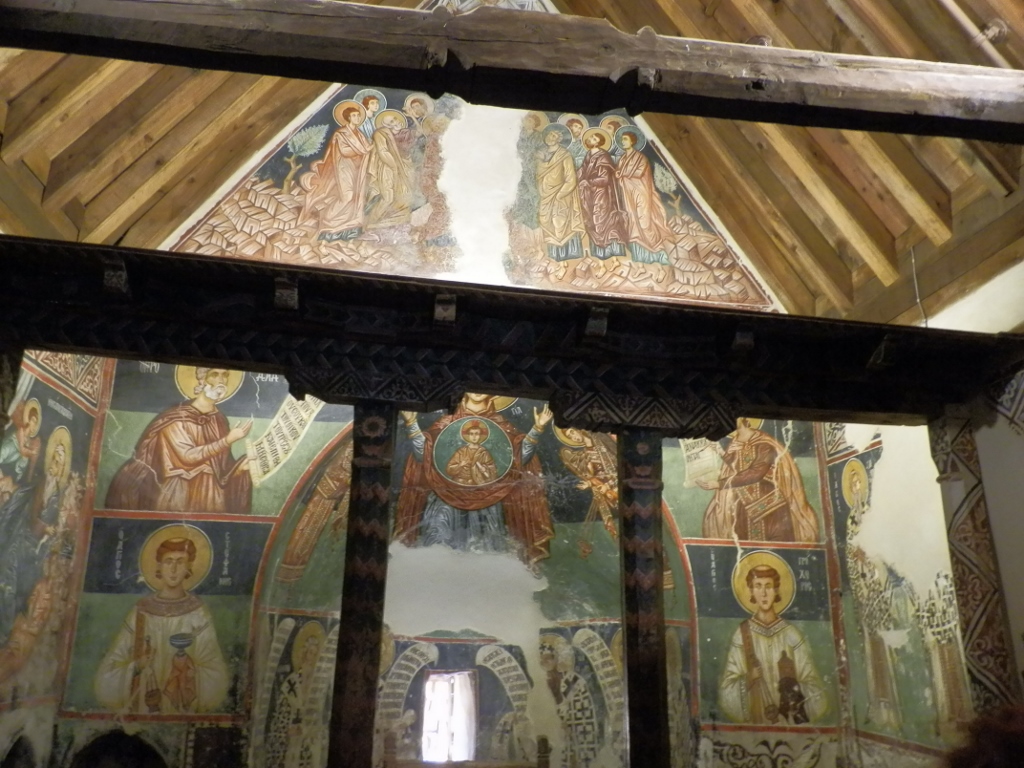 Archangelos Michael church
Archangelos Michael church
The next on our list was the small church of Virgin Mary in the village of Moutoulla (Panagia tou Moutoulla church) from the 13th century. When we got to it, we realized it was closed and it may have been on account of some renovation. I peered through a small window and saw ladders inside, while there were some plastic buckets and large nylon covers for protection during paiting outside. Be as it may, we walked around it, enjoyed its exterior beauty and then moved on.
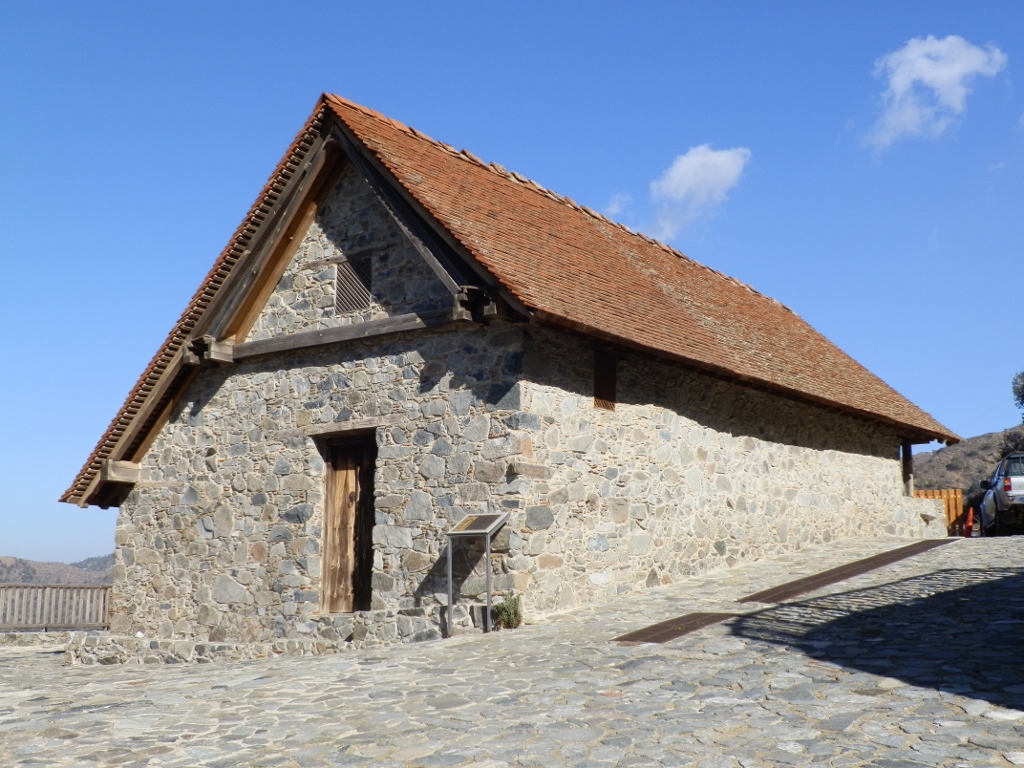 Panagia tou Moutoulla church
Panagia tou Moutoulla church
Thus we came to the place called Kalopanagiotis which is known for its sulphur springs, as well as for the monastery of St. John (Agios Ioannis Lambadistis). The place looks fantastic and I found it easy to imagine myself going there for a good rest. But not this time, as there was some sightseeing to do. The monastery is separated from the village by a small gorge and there is a bridge leading to it. We crossed the bridge and left the car there, admired the beauty of the fancy hotels on the other side of the gorge that lured one to go over, lie down and relax on their lawns, and then we entered the monastery. The monastery was also picturesque and its special feature is the church which in fact consists of three churches that have been built sideways, one resting against the other. In this way the ground plan of the church was extended, while keeping all three spaces painted in different styles under the same roof. These are the churches of Agios Irakleidios, Agios Ioannis Lambadistis and a Latin chapel. It was not allowed to take photos within the church, but outside it was ok.
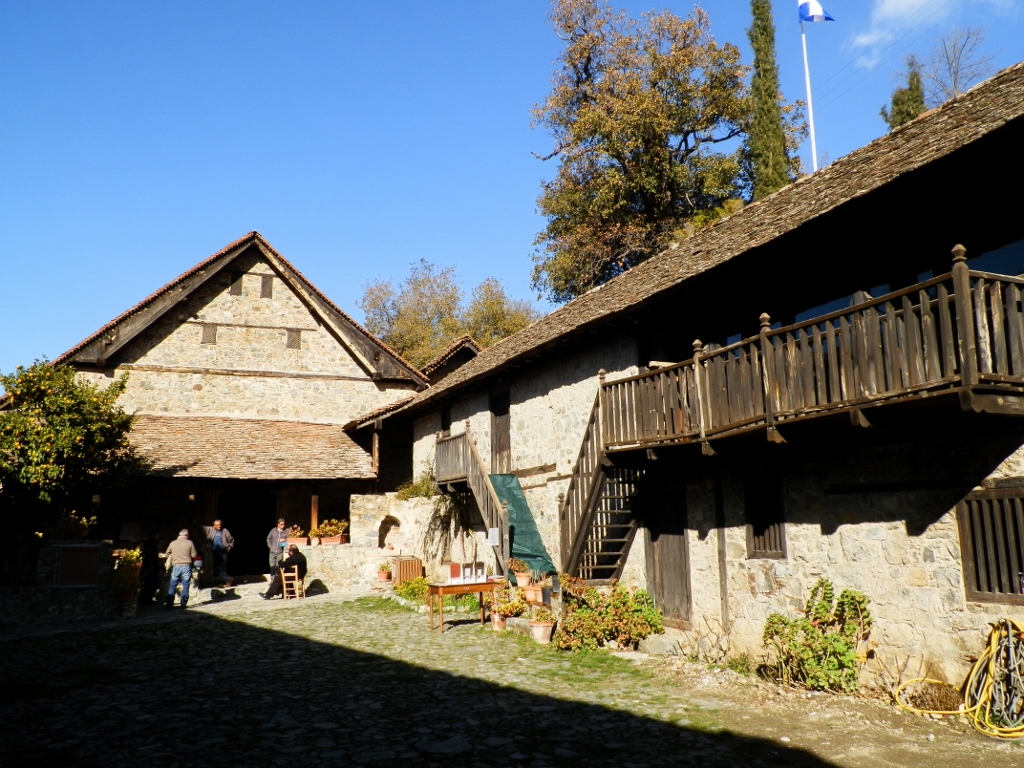 The monastery of St. John in Kalopanagiotis, interior yard with the church to the left
The monastery of St. John in Kalopanagiotis, interior yard with the church to the left
We couldn’t get to Troodos without going to the Kykkos Monastery. This is the most famous monastery and the most important spiritual centre in Cyprus founded in 1100. Archbishop Makarios III, the first president of independent Cyprus, became a monk here and he was also buried here in accordance with his wishes. Although the Kykkos Monastery was off our UNESCO List’s churches route, more to the west, it was absolutely worth the visit. It is big and impressive, appropriate for such an important spiritual centre. We stayed there for a while, enjoyed the perfect peace of the church and the monastery, bought a couple of souvenirs for gifts and then started to go back to the central massif of Troodos.
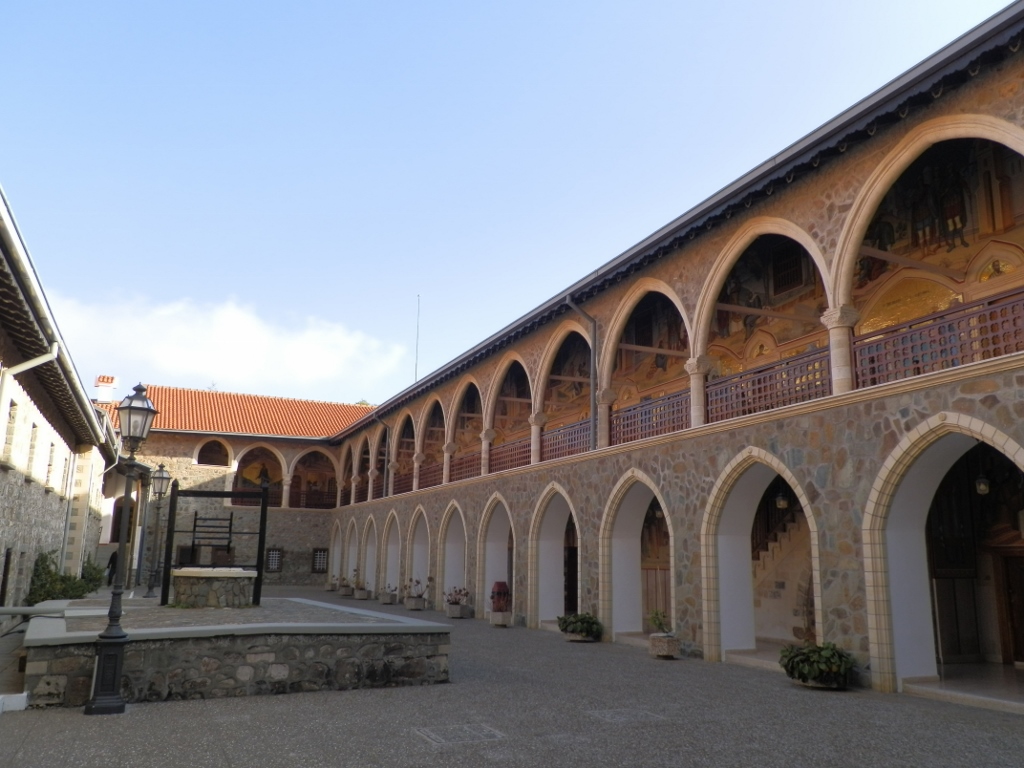 Kykkos Monastery, one of the inside yards
Kykkos Monastery, one of the inside yards
Then we wandered a little when we got back to Pedoulas, but we managed eventually. The map we used showed a lower-ranking road that we should take, but as it turned out the road was great. It must have been renovated recently and it was a true pleasure driving on a mildly winding road, with few other cars there and also we got below the snow line, so that was another worry less.
Soon we got to the place where the church of St. Nicholas of the Roof (Agios Nikolaos tis Stegis) was nicely tucked in. This slightly odd name was apparently given to the church on account of its specific roof. We left the car on the nearby parking lot and headed along a path. When I caught the sight of the church I had a sensation as if I had just entered a fairy-tale. It looked positively magical! We had gotten there just 5 minutes before it was closed and the man who was on duty there kindly let us look at the frescos from the 11th to the 17th century at our leisure. The frescos were truly beautiful, but I was mainly taken by the fantastic outside appearance of the church.
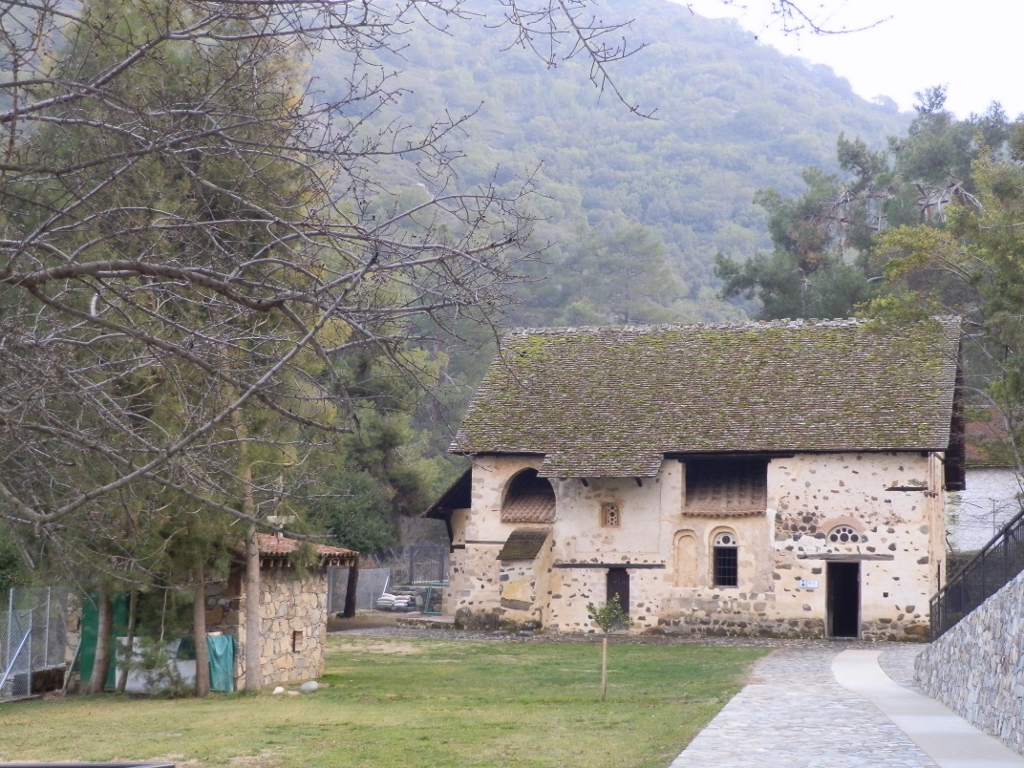 The church of St. John of the roof
The church of St. John of the roof
By now we were already quite certain that the last church in our plan for the day would be closed, for it was after 5 pm, but we went to see it nonetheless since there was still some daylight and we were close. First we went to Kakopetria, passed through it and then to Galata village where the church of Panagia Podithou dedicated to Virgin Mary is to be found. Of course it was closed, but it was also very interesting from the outside. It appeared as if it was a mountain house. Some 50 m farther we saw another smaller church that seemed recently renovated and that had a niche above the entrance door with remains of a fresco that was painted in there.
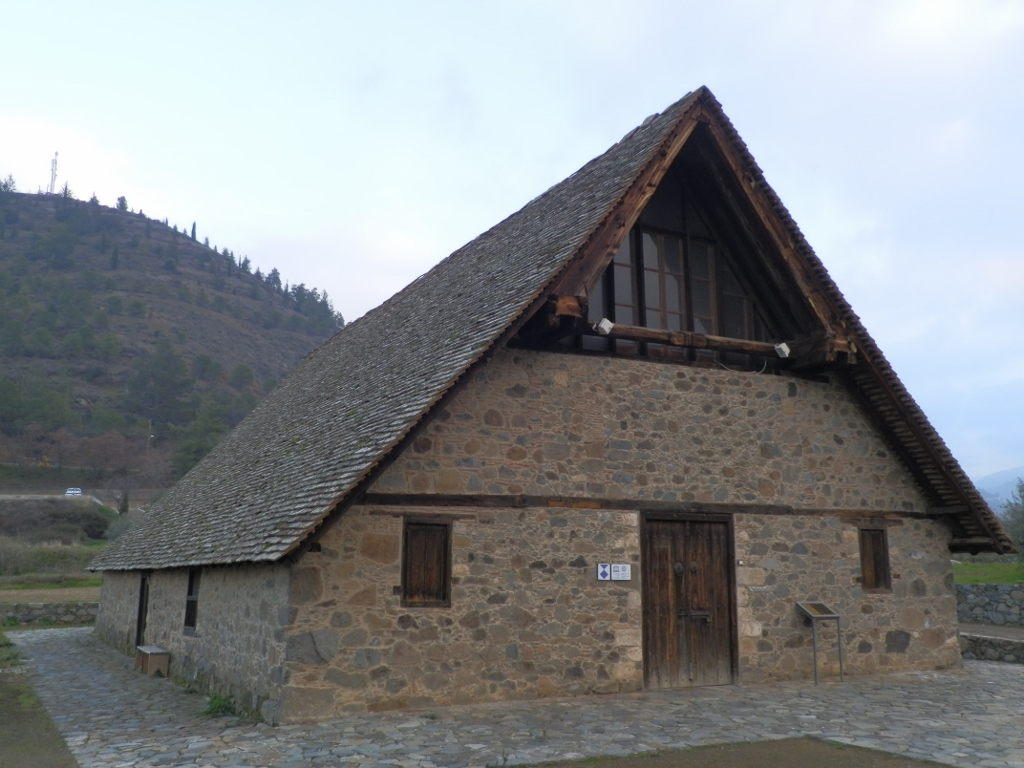 The church of Panagia Podithou in Galata village
The church of Panagia Podithou in Galata village
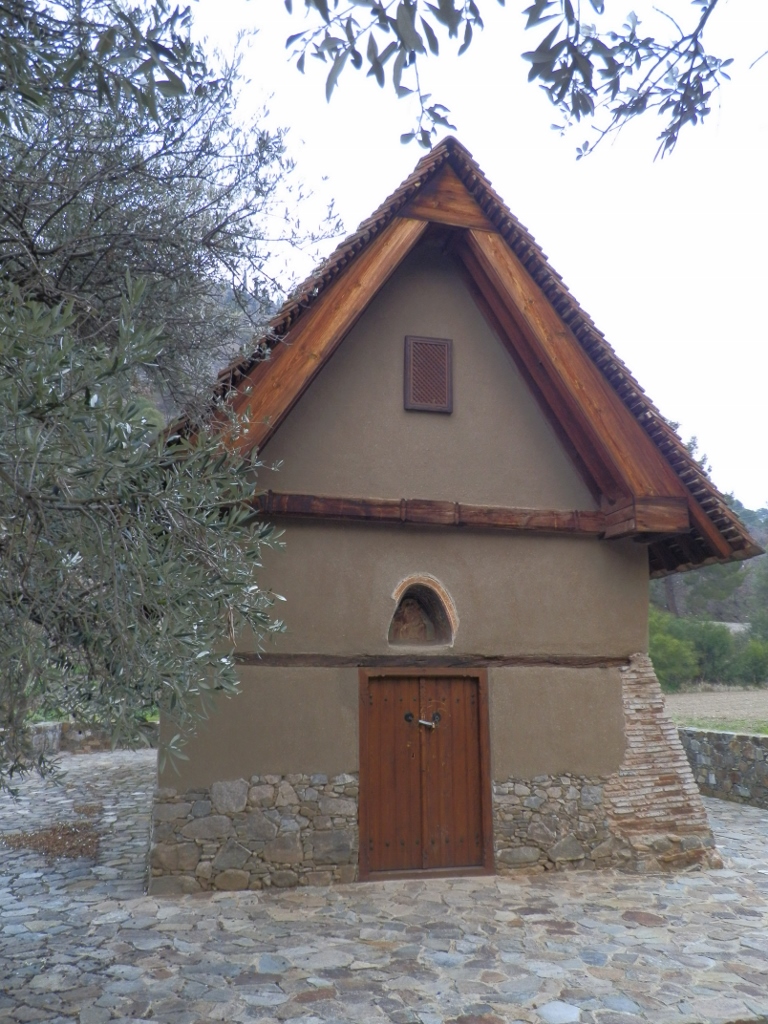 Smaller church in the direct proximity of the church of Panagia Podithou in Galata
Smaller church in the direct proximity of the church of Panagia Podithou in Galata
Finishing with our sightseeing for the day, we went back to Kakopetria and had gyros for dinner at a nice unpretentious local restaurant where there were only us and some local elderly people – the women sat there around a well heated furnace, while the men watched football. Oh yes, and this is where I gulped down 0.6 l of Cypriot beer Keo!
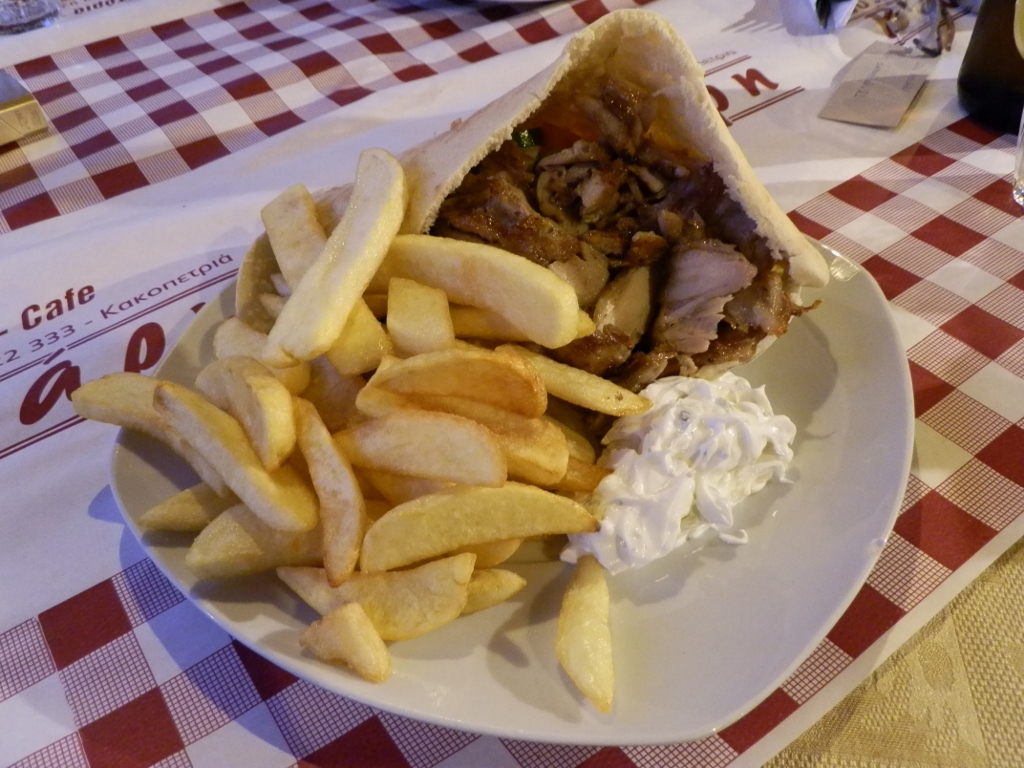 The portion of gyros at Kakopetria
The portion of gyros at Kakopetria